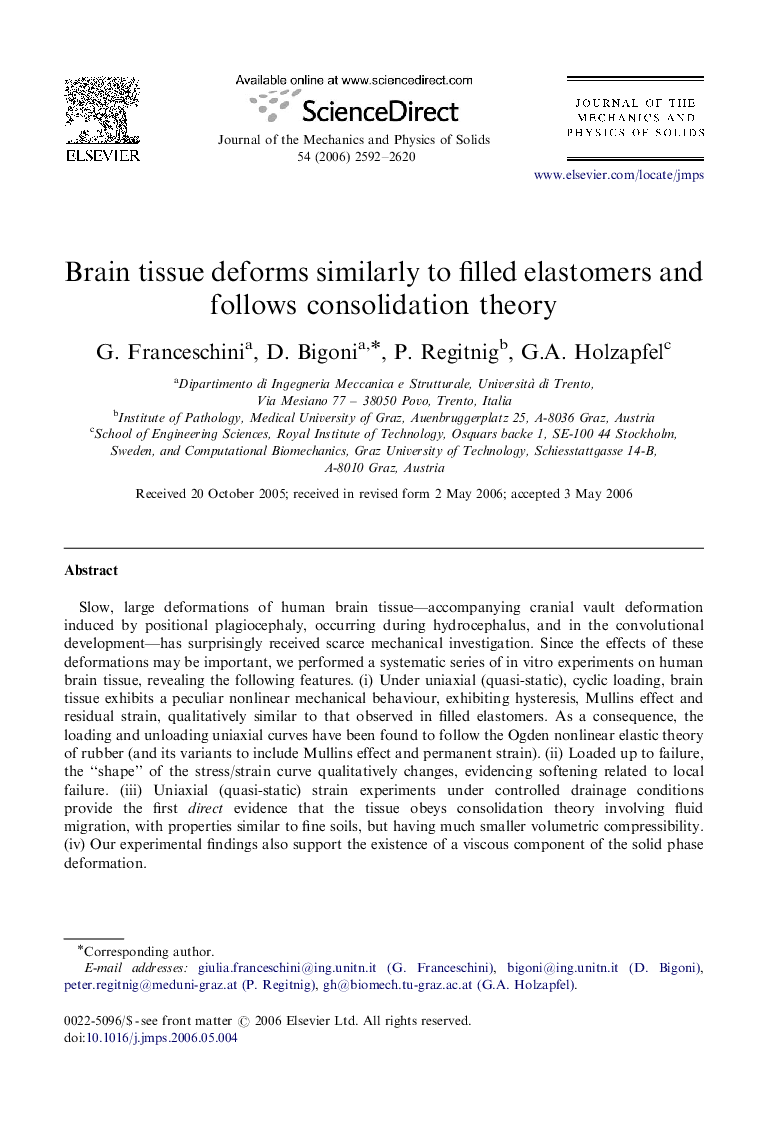| Article ID | Journal | Published Year | Pages | File Type |
|---|---|---|---|---|
| 800154 | Journal of the Mechanics and Physics of Solids | 2006 | 29 Pages |
Slow, large deformations of human brain tissue—accompanying cranial vault deformation induced by positional plagiocephaly, occurring during hydrocephalus, and in the convolutional development—has surprisingly received scarce mechanical investigation. Since the effects of these deformations may be important, we performed a systematic series of in vitro experiments on human brain tissue, revealing the following features. (i) Under uniaxial (quasi-static), cyclic loading, brain tissue exhibits a peculiar nonlinear mechanical behaviour, exhibiting hysteresis, Mullins effect and residual strain, qualitatively similar to that observed in filled elastomers. As a consequence, the loading and unloading uniaxial curves have been found to follow the Ogden nonlinear elastic theory of rubber (and its variants to include Mullins effect and permanent strain). (ii) Loaded up to failure, the “shape” of the stress/strain curve qualitatively changes, evidencing softening related to local failure. (iii) Uniaxial (quasi-static) strain experiments under controlled drainage conditions provide the first direct evidence that the tissue obeys consolidation theory involving fluid migration, with properties similar to fine soils, but having much smaller volumetric compressibility. (iv) Our experimental findings also support the existence of a viscous component of the solid phase deformation.Brain tissue should, therefore, be modelled as a porous, fluid-saturated, nonlinear solid with very small volumetric (drained) compressibility.
